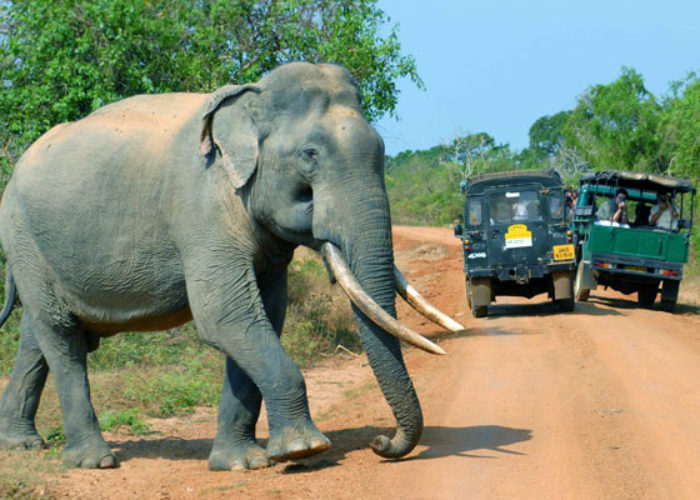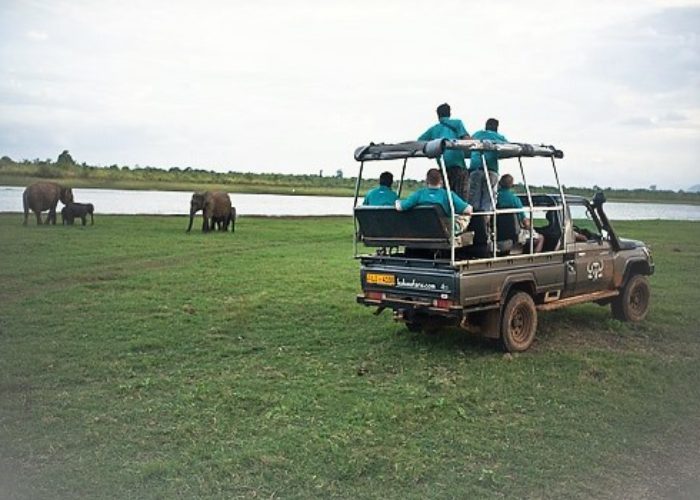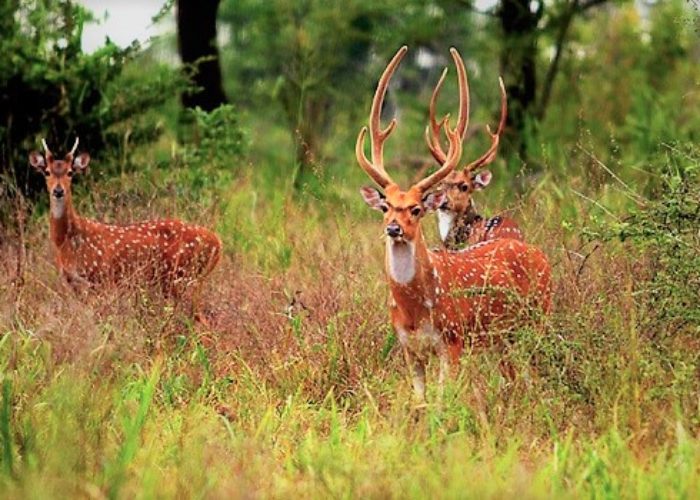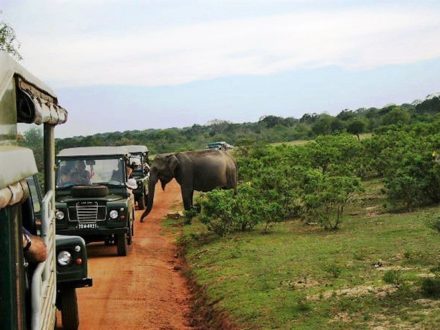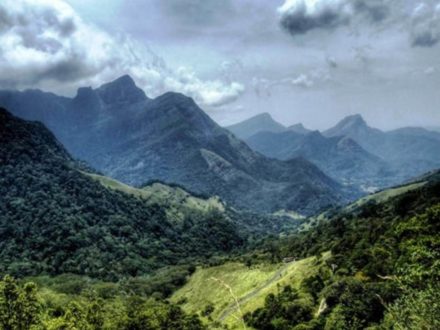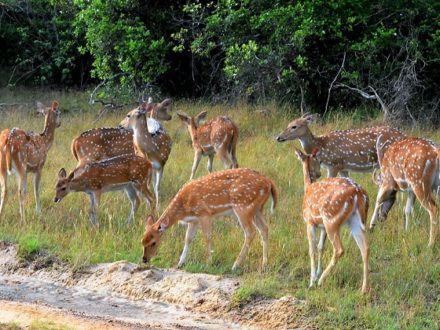
Udawalawe National Park lies on the boundary of Sabaragamuwa and Uva Provinces, in Sri Lanka. The national park was created to provide a sanctuary for wild animals displaced by the construction of the Udawalawe Reservoir on the Walawe River, as well as to protect the catchment of the reservoir. The reserve covers 30,821 hectares (119.00 sq mi) of land area and was established on 30 June 1972. Before the designation of the national park, the area was used for shifting cultivation (chena farming). The farmers were gradually removed once the national park was declared. The park is 165 kilometres (103 mi) from Colombo. Udawalawe is an important habitat for water birds and Sri Lankan elephants. It is a popular tourist destination and the third most visited park in the country.
Udawalawe lies on the boundary of Sri Lanka’s wet and dry zones. Plains dominate the topography, though there are also some mountainous areas. The Kalthota Range and Diyawini Falls are in the north of the park and the outcrops of Bambaragala and Reminikotha lie within it. The park has an annual rainfall of 1,500 millimetres (59 in), most of which falls during the months of October to January and March to May. The average annual temperature is about 27–28 °C (81–82 °F), while relative humidity varies from 70% to 82%. Well-drained reddish-brown soil is the predominant soil type, with poorly drained low humic grey soils found in the valley bottoms. Mainly alluvial soils form the beds of the water cources.
Mammals. Udawalawe is an important habitat for Sri Lankan elephants, which are relatively hard to see in its open habitats. Many elephants are attracted to the park because of the Udawalawe reservoir, with a herd of about 250 believed to be permanently resident. The Udawalawe Elephant Transit Home was established in 1995 for the purpose of looking after abandoned elephant calves within the park. A total of nine calves, on two occasions in 1998 and 2000, with another eight calves in 2002, were released in the park when old enough to fend for themselves. The rusty-spotted cat, fishing cat and Sri Lankan leopard are members of the family Felidae present in Udawalawe. The Sri Lankan sloth bear is seldom seen because of its rarity. Sri Lankan sambar deer, Sri Lankan axis deer, Indian muntjac, Sri Lankan spotted chevrotain, wild boar and water buffalo are among other mammal species. Golden jackal, Asian palm civet, toque macaque, tufted grey langur and Indian hare also inhabit the park. A study conducted in 1989 found that considerable numbers of golden palm civets inhabit the forests of Udawalawe. Five species of mice also have been recorded from the park. The endemic Ceylon spiny mouse, known from Yala National Park, was recorded in Udawalawe in 1989. Indian bush rat and three species of mongoose are also recorded in the national park.
Birds. Udawalawe is also a good birdwatching site. Endemics such as Sri Lanka spurfowl, red-faced malkoha, Sri Lanka grey hornbill, brown-capped babbler, and Sri Lanka junglefowl are among of the breeding resident birds. White wagtail and black-capped kingfisher are rare migrants. A variety of water birds visit the reservoir, including cormorants, the spot-billed pelican, Asian openbill, painted stork, black-headed ibis and Eurasian spoonbill. The open parkland attracts birds of prey such as white-bellied sea eagle, crested serpent-eagle, grey-headed fish eagle, booted eagle, and changeable hawk-eagle. Landbirds are in abundance, and include Indian roller, Indian peafowl, Malabar pied hornbill and pied cuckoo. Reptiles and fish. Oriental garden lizards, painted-lip lizards, mugger crocodiles, Asian water monitors, Bengal monitors and 30 species of snake are found in the park. Garra ceylonensis is an endemic fish species recorded in park. Introduced Oreochromis spp., giant gourami, catla, and rohu are important food fish species found in the reservoir.

